Chevrolet is a name that resonates deeply within the American automotive world, famed for producing cars that span from reliable, everyday vehicles to high-octane, power-packed muscle cars.
The brand has been at the forefront of the American auto industry since its inception, with a reputation for creating models that offer performance, affordability, and reliability.
However, hidden within Chevrolet’s vast portfolio lies a select group of ultra-rare, high-performance muscle cars that stand apart from the standard fare. These rare beasts, often the result of limited production runs, special editions, or the passion-driven “skunkworks” projects conducted after hours by dedicated engineers, have become legendary among collectors and enthusiasts.
These rare Chevrolet muscle cars aren’t your average mass-produced vehicles—they’re the epitome of exclusivity and automotive craftsmanship. Each one is a representing to the brand’s willingness to push the boundaries of performance, often featuring hand-assembled engines, experimental transmissions, lightweight aluminum body panels, and mind-boggling horsepower figures.
They were designed for the track but homologated for the streets, giving the lucky few who got their hands on them the best of both worlds raw power and street-legal status.
Some of these models were so exclusive that only a handful were ever produced, and even fewer survived the test of time. Often created to fulfill racing regulations or as experimental models to gauge public reaction, these vehicles have become icons in their own right.
Today, these cars represent the ultimate collectible Chevrolets, commanding staggering sums at auctions, sometimes reaching into the seven-figure range. The rarity of these vehicles isn’t just due to their limited production numbers but also the fact that they were often misunderstood at the time of their release.
Buyers shied away from some of these models due to their high sticker prices, overly aggressive specs, or lack of mainstream appeal, but hindsight has turned these once-overlooked machines into the holy grails of the muscle car world.
Many of these ultra-rare Chevrolets carry an air of mystique. Stories abound about skunkworks projects, where engineers, obsessed with performance and racing dominance, would work late into the night to develop these monsters.
Often, these vehicles were built with racing regulations in mind, meaning that they had to meet certain production quotas to qualify for specific competitions.
As a result, Chevrolet would produce just enough of these models to meet those requirements, making each one a rare find for collectors today.
From cars equipped with experimental transmissions to those sporting hand-built V8 engines with immense horsepower, these Chevrolets were built with one thing in mind performance. The attention to detail is evident in every aspect of these cars, whether it’s the lightweight aluminum panels used to reduce weight or the aggressive, race-ready suspension systems designed to handle track conditions.
These are not just cars they are pieces of Chevrolet’s performance history, each representing a moment when the brand decided to push the limits of what was possible.
What makes these rare Chevrolets even more intriguing is how they’ve aged. While some of these cars sold out immediately, others were initially ignored due to their steep prices or unconventional specifications.
Over time, however, as collectors and enthusiasts came to appreciate the engineering and rarity of these vehicles, their values skyrocketed.
Today, owning one of these cars isn’t just about having a fast muscle car—it’s about possessing a piece of automotive history, a car that stands as a symbol of Chevrolet’s commitment to performance and innovation.
Where most cars are built for mass appeal, these rare Chevrolet muscle cars stand out as examples of what happens when engineers are given free rein to create something extraordinary.
With their hand-built engines, experimental components, and limited production numbers, these vehicles offer more than just speed they offer a look into Chevrolet’s storied past and the passion that drove its engineers to create some of the most powerful and exclusive cars the world has ever seen.
Today, they are highly sought after, commanding high prices at auctions and offering ultimate bragging rights for muscle car enthusiasts everywhere.
11) The Legendary 1967 Chevrolet Camaro Z/28 A Racetrack Icon
When the Chevrolet Camaro made its debut in 1967, it quickly became a sensation, capturing the hearts of car enthusiasts with its stylish design and robust performance. In its inaugural year, over 220,000 Camaros rolled off the assembly line, marking a significant milestone for Chevrolet.
But as the Camaro began to prove itself on the streets, it was clear that it had the potential to excel on the racetrack as well. To make this happen, Chevrolet needed to create a special version of the Camaro designed specifically for racing—this is where the 1967 Camaro Z/28 came into play.
The Z/28 package was introduced as a performance option for the 1967 Camaro. At a cost of $358.10, it transformed the Camaro into a serious contender on the track. This limited-production model is highly sought after today, with only 602 units produced.
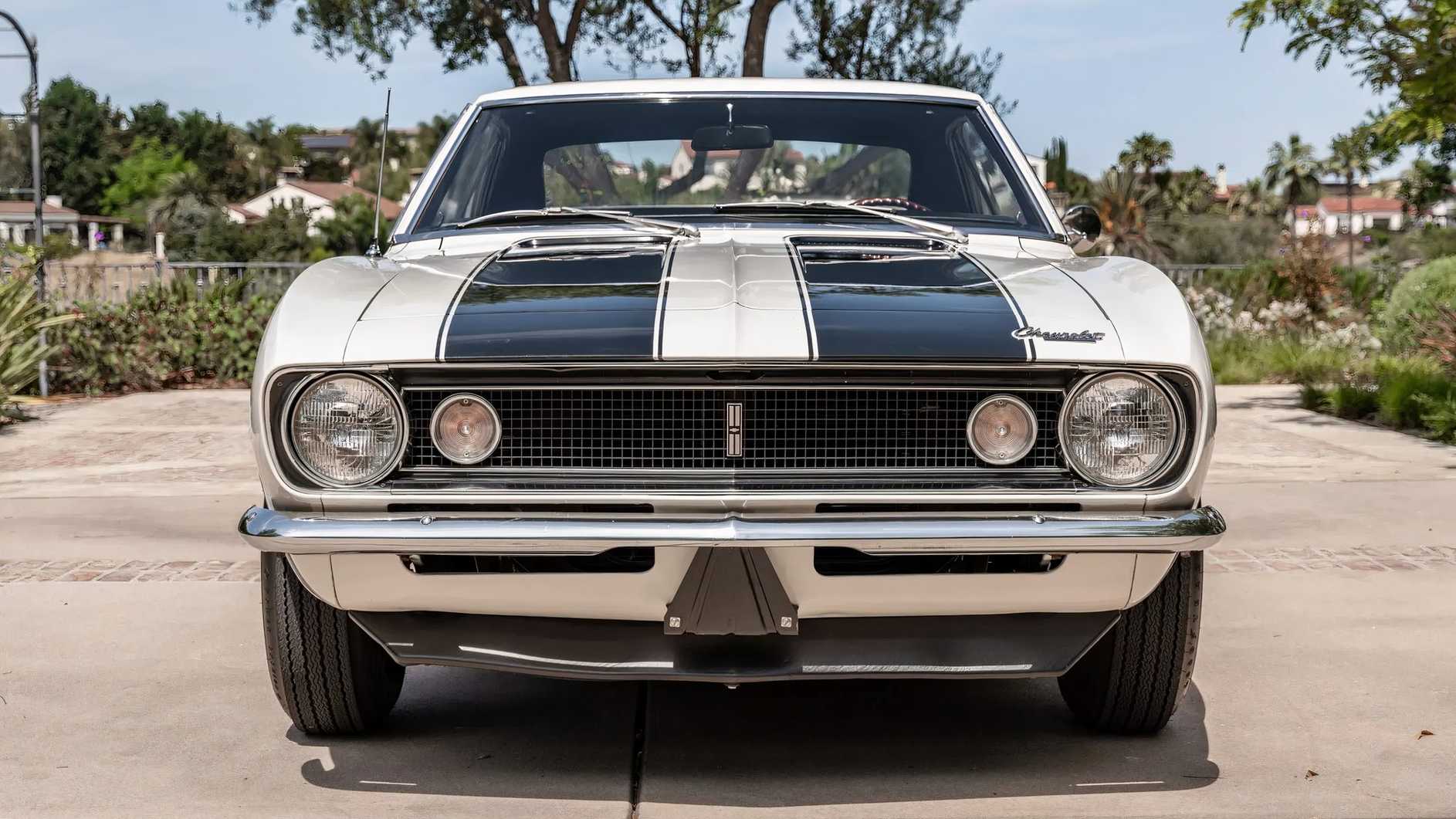
The Z/28 came with a range of performance enhancements that set it apart from the standard Camaro models.
Under the hood, the Z/28 was equipped with a 302 cubic inch (ci) V8 engine, designed for both speed and reliability. This engine was paired with a close-ratio four-speed manual transmission, which allowed for quicker gear changes and improved handling.
Additionally, the Z/28 featured power disc brakes, an upgraded suspension system, and a high-performance radiator to keep the engine cool during intense driving conditions.
These upgrades were not just for show—they significantly improved the car’s performance and made it well-suited for competitive racing.
The engine’s horsepower was officially rated at 290 hp, but many believe this figure was understated. The true power of the 302 V8 was likely higher, adding to the car’s allure among enthusiasts and collectors.
This understated power, combined with the Z/28’s racing pedigree, has contributed to its status as a highly coveted collector’s item.
Finding an original 1967 Camaro Z/28 today is no easy task. These cars are rare, and their value can vary greatly depending on their condition and authenticity.
For collectors, ensuring that the Z/28 has the original parts and proper documentation is crucial, as these factors can significantly affect its value.
As of now, a well-preserved 1967 Camaro Z/28 can fetch around $89,300, reflecting its desirability and historical significance. This classic muscle car not only represents a pivotal moment in Chevrolet’s history but also embodies the spirit of American muscle cars in their prime.
For anyone lucky enough to own one, it’s more than just a car—it’s a piece of racing history that continues to inspire awe and admiration.
10) The 1993 Chevrolet Camaro Z28 Indy Pace Car A Flashy Tribute to Racing History
The 1993 Chevrolet Camaro Z28 Indy Pace Car is a striking example of how car manufacturers celebrate their role in motorsport history.
This special edition Camaro was produced to honor its selection as the official pace car for the 1993 Indianapolis 500, a prestigious role that has long been associated with high-performance vehicles.
Unlike other models that focus on enhancing driving dynamics, the 1993 Indy Pace Car edition was primarily about style and making a memorable impression.
Chevrolet produced only 645 units of this limited-edition Camaro, making it a rare find for collectors and enthusiasts today. The design of the Pace Car edition was anything but understated. It featured a bold color scheme of black and white with eye-catching pastel ribbons running along its sides.
This unique graphic package was intended to highlight the car’s special status, making it stand out in a crowd, even though its appearance might seem a bit dated by today’s standards.
Inside, the theme continued with the same black and white color scheme, which extended to the interior trim and upholstery.
The result was a cabin that echoed the car’s exterior design, maintaining the pace car’s distinctive look even when you were behind the wheel. While this focus on aesthetics might not appeal to everyone, it was a key part of the car’s charm and purpose.
Under the hood, the 1993 Camaro Z28 Indy Pace Car came with a 5.7-liter V8 engine, delivering 275 horsepower and 325 lb-ft of torque. Despite its race-inspired exterior, the mechanical specifications were the same as the standard Z28 model.
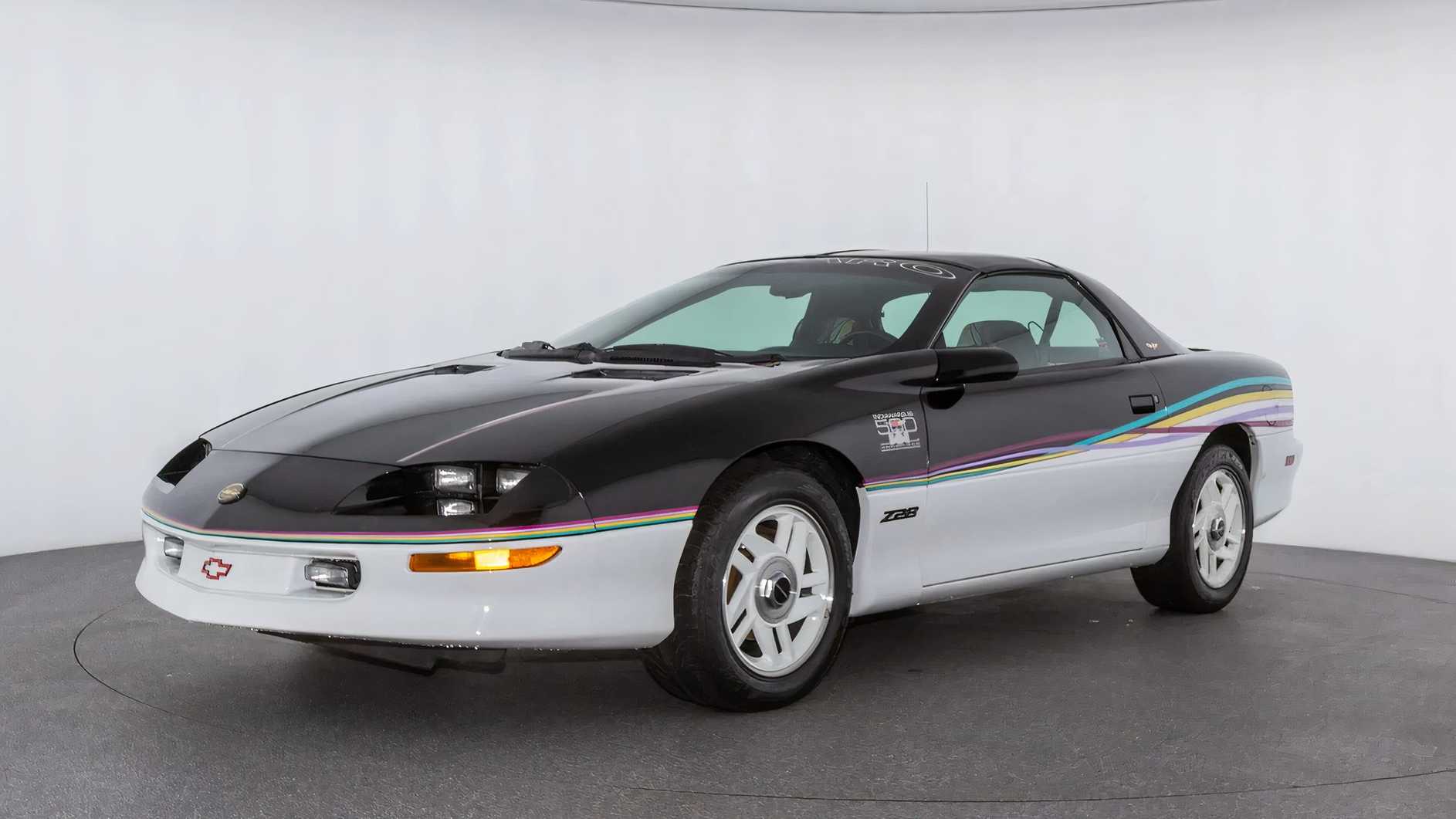
The performance remained competent but not extraordinary compared to other high-performance vehicles of its time. The engine provided a solid driving experience, but it was clear that the Pace Car edition was more about celebrating Chevrolet’s presence at the Indy 500 than offering an enhanced driving experience.
The Camaro Z28 Indy Pace Car edition found a following among enthusiasts and collectors who appreciated its role in commemorating a significant racing event. Despite its special edition status, the Camaro Z28 Indy Pace Car remains relatively affordable compared to other collectible muscle cars, with current values around $15,700.
This affordability makes it an accessible entry point into the world of collectible muscle cars, especially for those who are drawn to the unique design and historical significance of the Pace Car edition.
For collectors, the 1993 Camaro Z28 Indy Pace Car represents a snapshot of early ’90s automotive culture and a tribute to the excitement of the Indianapolis 500.
While it might not offer the same performance as other rare muscle cars, its limited production run and distinctive appearance make it a noteworthy addition to any collection.
Whether you’re a fan of racing history or simply enjoy the bold designs of the early ’90s, this Camaro provides a colorful and memorable piece of automotive heritage.
9) The 1970 Chevrolet El Camino SS LS6 The Muscle Car Utility Vehicle
The 1970 Chevrolet El Camino SS LS6 is a standout example of how an unconventional vehicle can transform into a formidable muscle car. Originally introduced in 1959 as a coupe utility vehicle, the El Camino was a blend of a pickup truck and a car.
However, by the early 1970s, Chevrolet offered a special package that turned this hybrid body style into a full-blown muscle car. The LS6 engine option was the key to this transformation, making the El Camino SS LS6 a unique and powerful machine.
The LS6 engine option was a significant upgrade for the 1970 El Camino. This 7.4-liter V8 engine, which was already well-regarded for its performance in other Chevrolet models, offered an impressive 450 horsepower and 500 lb-ft of torque. While not the most exotic engine of its time, the LS6 was renowned for its raw power and performance. It delivered a performance that was both exhilarating and, for its era, extraordinarily fast.
Chevrolet produced only about 500 units of the El Camino SS with the LS6 engine, making it a rare find among muscle car enthusiasts. At the time, the LS6 package came with a hefty price tag of $3,764, which was a significant investment for the average buyer.
Despite the high cost, those who opted for the LS6 package received a vehicle capable of tackling the quarter mile in just 13.44 seconds—a remarkable feat for a vehicle of its kind.
Today, the 1970 Chevrolet El Camino SS LS6 remains a coveted collector’s item. In good condition, these rare vehicles are valued at around $69,100. However, pristine examples can fetch as much as $300,000 at auctions.
This high value reflects not only the car’s rarity but also its status as a symbol of muscle car performance and innovation.
The El Camino SS LS6’s unique blend of utility and muscle car performance makes it a fascinating piece of automotive history.

It represents a time when manufacturers were experimenting with new ways to combine different vehicle attributes, resulting in a machine that was both practical and extraordinarily powerful. For enthusiasts, owning an El Camino SS LS6 is not just about having a rare car—it’s about owning a piece of automotive history that combines performance with the everyday utility of a pickup.
Looking ahead, there have been rumors that Chevrolet might bring back the El Camino in an electric form. While this would mark a significant departure from the muscle car roots of the original LS6, it would also be a Chevrolet’s willingness to innovate and adapt to new automotive trends.
Whether or not this future version can match the iconic status of the 1970 El Camino SS LS6 remains to be seen, but the original remains a cherished example of muscle car excellence.
8) The 1965 Chevrolet Malibu SS 396 Z16: A Hidden Gem of Muscle Car History
The 1965 Chevrolet Malibu SS 396 Z16 is a fascinating piece of automotive history that often flies under the radar compared to its more famous muscle car counterparts.
While it might initially appear like a modest two-door coupe from the ’60s, this car hides a potent performance under its understated exterior. With only 201 units produced, it stands as one of the rarest and most coveted models from Chevrolet’s muscle car era.
The Malibu SS 396’s design is deceptively simple. At first glance, the car might seem boxy and conservative, but a closer look reveals its subtle elegance. The gently curved lines and slightly squared-off arches give it a distinctive, restrained charm that sets it apart from more flamboyant muscle cars of the time.
This understated design was a deliberate choice, as Chevrolet wanted to keep the Z16 package relatively secret, relying on word-of-mouth to stir up excitement among select customers.
The Z16 package was introduced as a way to boost the Malibu SS’s performance without making a big public splash. Dealers were instructed to discreetly inform potential buyers about this special option.
This low-key approach was meant to create an air of exclusivity and excitement around the Malibu SS 396, but it didn’t quite achieve the desired effect. As a result, only 201 of these performance-oriented Malibus were sold, making it a rare find today.
Under the hood, the 1965 Malibu SS 396 was a powerhouse. It featured a 396 cubic-inch V8 engine, capable of producing 375 horsepower and 420 lb-ft of torque.
This engine was a significant upgrade over the standard L79 V8 and provided a thrilling driving experience that belied the car’s subdued appearance. The performance of the Malibu SS 396 was impressive for its time, offering a combination of speed and power that few cars could match.
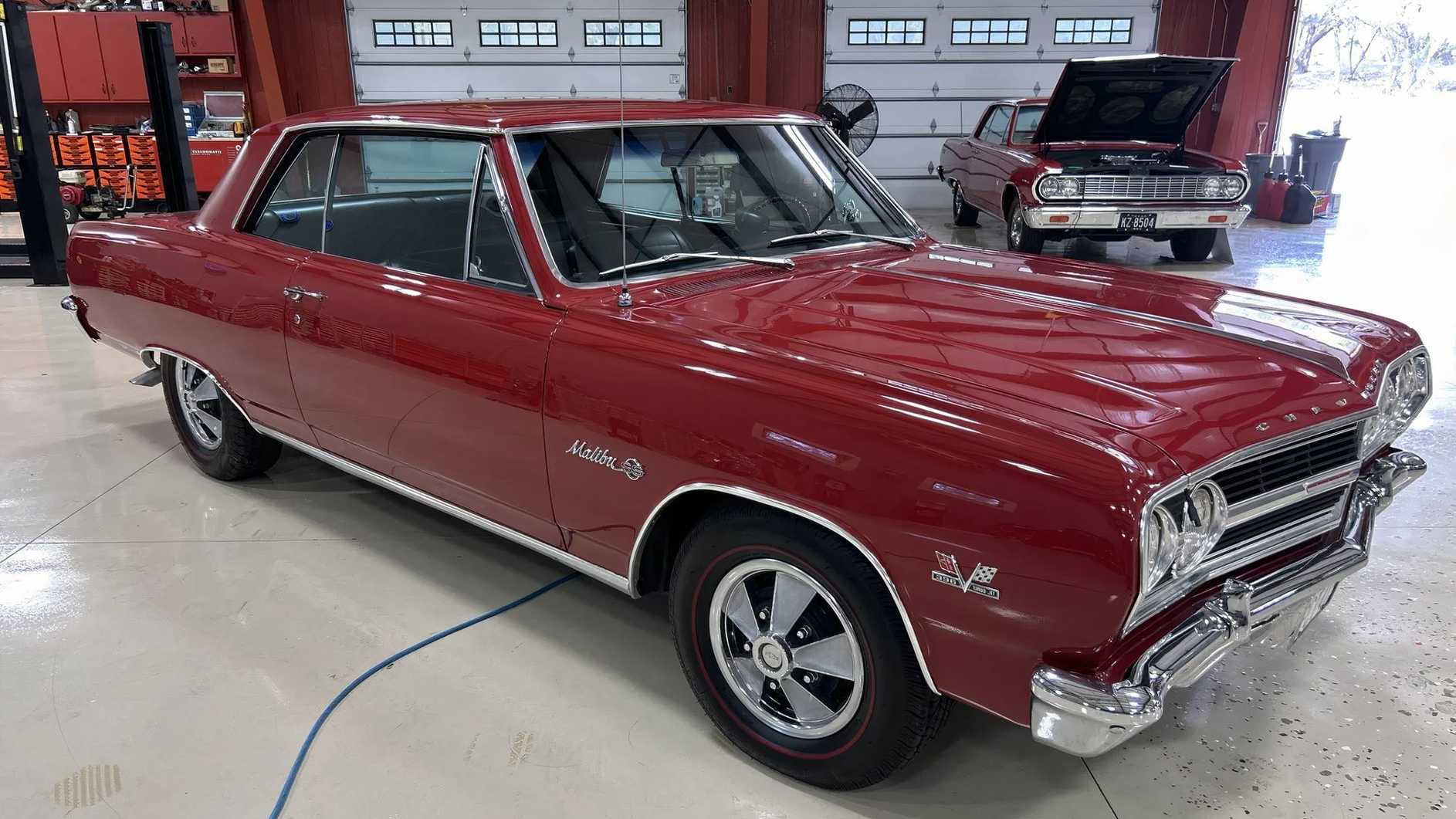
Today, the 1965 Chevrolet Malibu SS 396 Z16 is highly sought after by collectors and enthusiasts. Its rarity and the unique story behind its introduction contribute to its high value.
Currently, well-preserved examples of this car can fetch around $96,000. This price reflects not only the car’s performance capabilities but also its place in muscle car history as a rare and hidden gem.
Owning a 1965 Malibu SS 396 Z16 is not just about having a piece of automotive history; it’s about having a car that represents a unique chapter in Chevrolet’s muscle car lineage. Despite its low production numbers and the secretive way it was marketed, the Malibu SS 396 has earned its place as a prized collectible.
For those lucky enough to find and own one, it’s a reminder of an era when muscle cars were not just about flashy designs but also about performance and exexclusivity.
7) The 1969 Chevrolet Camaro Yenko: A Legendary Muscle Car Transformation
The 1969 Chevrolet Camaro Yenko is a legendary example of how a performance-focused vision can transform a factory muscle car into a rare and highly coveted collectible. With only 201 units produced, the Yenko Camaro stands out as a remarkable chapter in the Camaro’s storied history, thanks to the vision and expertise of its creator, Don Yenko.
Don Yenko was a prominent racecar driver and a car dealer with a reputation for pushing the limits of performance. When the Camaro debuted with the L78 engine, a 396 cubic-inch V8 that was considered powerful but not quite enough for Yenko’s taste, he decided to make significant improvements.
Yenko’s goal was to create a Camaro that could truly compete with the best of the muscle cars of the era, so he set about swapping the standard engine for something much more potent.
The transformation began with Yenko using a special loophole in GM’s production system known as the Central Office Production Order (COPO). This system allowed dealerships to order cars with non-standard factory specifications. Yenko exploited this loophole to have GM install the Corvette’s formidable L-72 427 cubic-inch (7.0L) V8 engine into the Camaro.
This engine was significantly more powerful, boasting 425 horsepower and 460 lb-ft of torque, compared to the standard engine options available at the time.
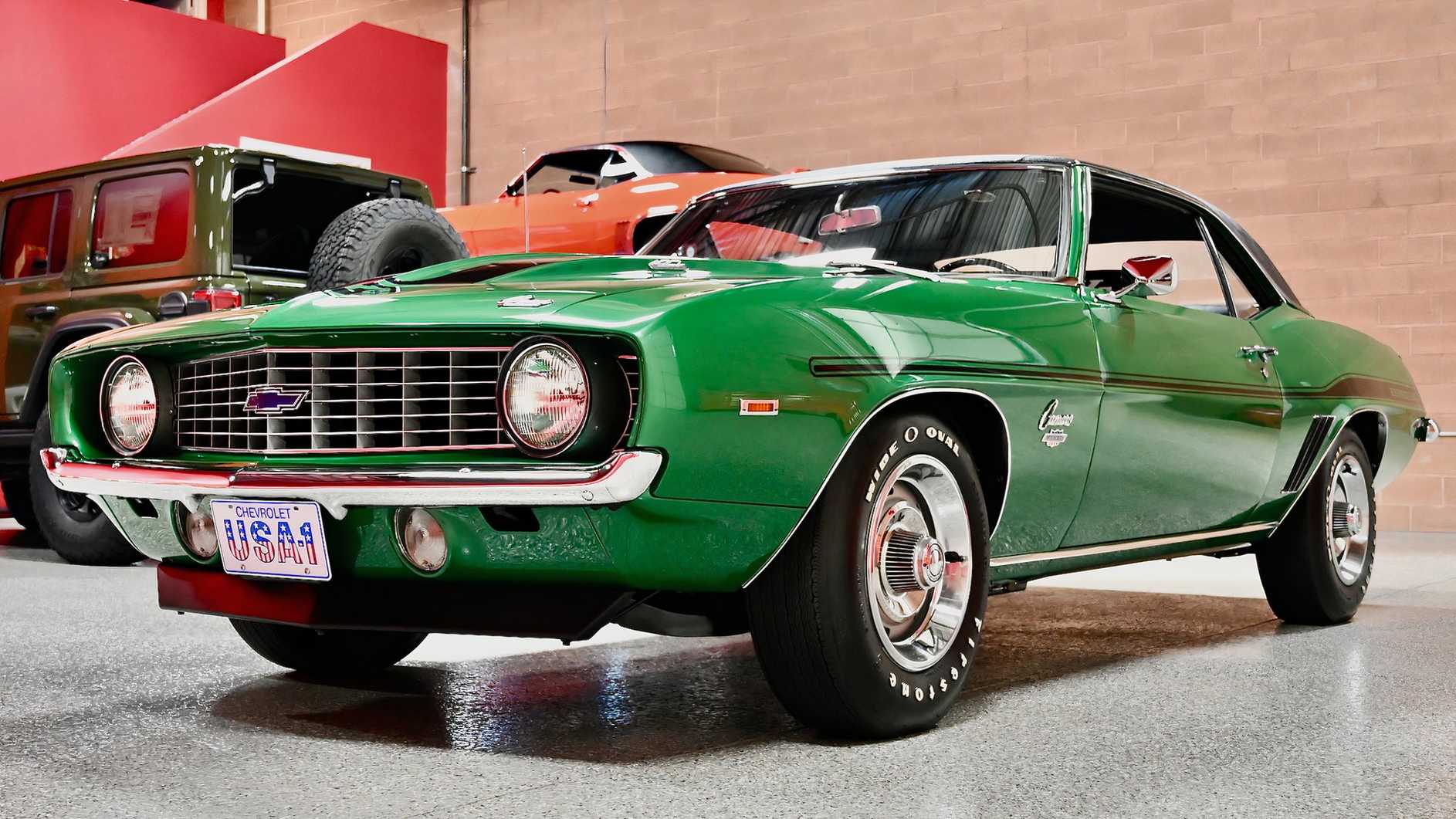
To complement the new engine, Yenko’s Camaros were outfitted with a range of performance and aesthetic enhancements. Each car featured distinctive twin stripes, a cowl-induction hood designed to funnel more air to the engine, and a 140 mph speedometer to match the car’s increased performance capabilities.
The Camaro’s design also included various spoilers to improve aerodynamics and handling, making the Yenko Camaro not just faster, but also more stylish and functional.
Yenko commissioned a total of 201 units of this upgraded Camaro in 1969, making it a rare and highly collectible muscle car today. The combination of limited production, high performance, and distinctive styling has made the 1969 Camaro Yenko a prized possession among collectors and enthusiasts.
Its rarity and historical significance are reflected in its current market value, which can reach up to $301,000 for well-preserved examples.
The 1969 Chevrolet Camaro Yenko remains an iconic symbol of muscle car history. Its creation is a very exclusive to Don Yenko’s commitment to pushing performance boundaries and his skill in turning a standard production car into a high-performance powerhouse.
For those who are passionate about muscle cars and automotive history, owning a Yenko Camaro is not just about having a piece of rare machinery; it’s about possessing a slice of automotive legend and appreciating the craftsmanship and ingenuity that went into its creation.
6) The 1969 Chevrolet Camaro ZL1: A Legendary Muscle Car of the 1960s
The 1969 Chevrolet Camaro ZL1 is one of the most sought-after muscle cars in automotive history. With only 69 units ever built, this rare gem represents a high point in Camaro’s performance evolution and a bold move by Chevrolet to dominate the drag racing scene.
When the Camaro first appeared in 1967, it was designed to rival the Ford Mustang and capture the hearts of car enthusiasts. Initially, buyers could choose from various engines, including a 230 cubic-inch straight-six with 140 horsepower and a 396 cubic-inch V8 producing 375 horsepower. These options offered solid performance but did not set the world on fire.
By 1969, Chevrolet wanted to up the ante and introduce a truly exceptional model to lead the Camaro lineup. They turned to the COPO (Central Office Production Order) system, a special ordering process that allowed dealerships to request factory-built cars with non-standard specifications.
Using this system, Chevrolet offered an engine package that would make history—the all-aluminum 427 cubic-inch big block V8, codenamed ZL1.
The ZL1 engine was originally designed for drag racing and boasted a remarkable 425 horsepower and 460 lb-ft of torque, although it was advertised at a conservative 375 horsepower.
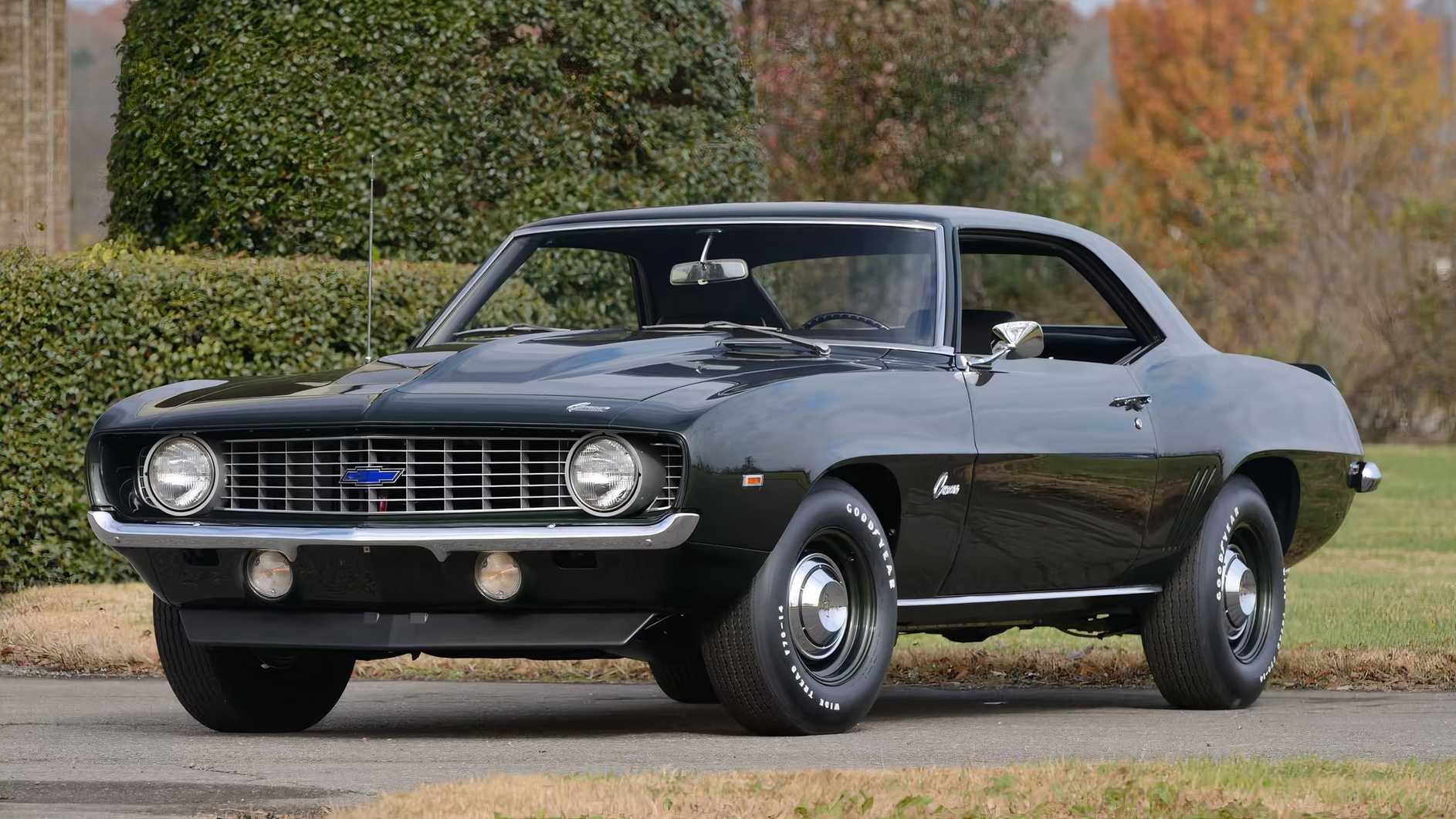
Its all-aluminum construction made it lighter and more powerful compared to other engines of its time. This engine could be easily tuned to reach 500 horsepower, showcasing its potential and performance capabilities.
However, the ZL1 came with a hefty price tag. The engine alone cost as much as a complete Camaro, effectively doubling the cost of the car.
This steep price made the ZL1 a luxury item that was not accessible to the average buyer, contributing to its limited production. Only 69 units were sold in 1969, marking the ZL1 as a rare and highly coveted collector’s item.
Despite its limited success in terms of sales, the 1969 Camaro ZL1 has become an iconic symbol of muscle car excellence. Its rarity and powerful performance make it a prized possession among collectors today.
The ZL1’s status is reflected in its high market value, with recent sales figures reaching up to one million dollars for well-preserved examples.
The Camaro ZL1 represents the pinnacle of Chevrolet’s muscle car engineering of the late 1960s. Its blend of advanced technology, raw power, and limited availability have cemented its place in automotive history. For enthusiasts and collectors, owning a 1969 Camaro ZL1 is more than just having a rare car; it’s about possessing a piece of muscle car legend that continues to inspire car lovers around the world.
5) The 1963 Chevrolet Impala RPO Z11: A Drag Racer’s Dream
The 1963 Chevrolet Impala RPO Z11 is one of the rarest and most intriguing muscle cars ever produced by Chevrolet. With only 57 units ever made, this special edition was designed specifically for drag racing enthusiasts and stands out for its impressive performance and unique features.
In the early 1960s, Chevrolet wanted to offer a car that could dominate the drag strip and appeal to serious racers. The result was the RPO Z11 package for the Impala, which turned the classic, sleek coupe into a powerful machine with racing credentials.
The Impala RPO Z11 came equipped with a formidable 7.0-liter V8 engine, producing 430 horsepower and an astounding 575 lb-ft of torque. This power allowed the car to accelerate quickly and outperform many of its competitors on the drag strip.
To achieve its racing goals, Chevrolet made several modifications to the standard Impala. The car was stripped down to reduce weight, removing non-essential features like the radio, heater, and soundproofing.
This focus on lightweight construction made the RPO Z11 faster and more agile, which was crucial for drag racing.
Additionally, Chevrolet used aluminum for several parts of the car to further cut down on weight. The hood, fenders, and both the front and rear bumpers were all crafted from aluminum.
These changes resulted in a car that was over 300 pounds lighter than the regular production Impala, giving it a significant edge in performance.
Most of the Impala RPO Z11 models were finished in Ermine White, a classic and clean color that highlighted the car’s racing intent.
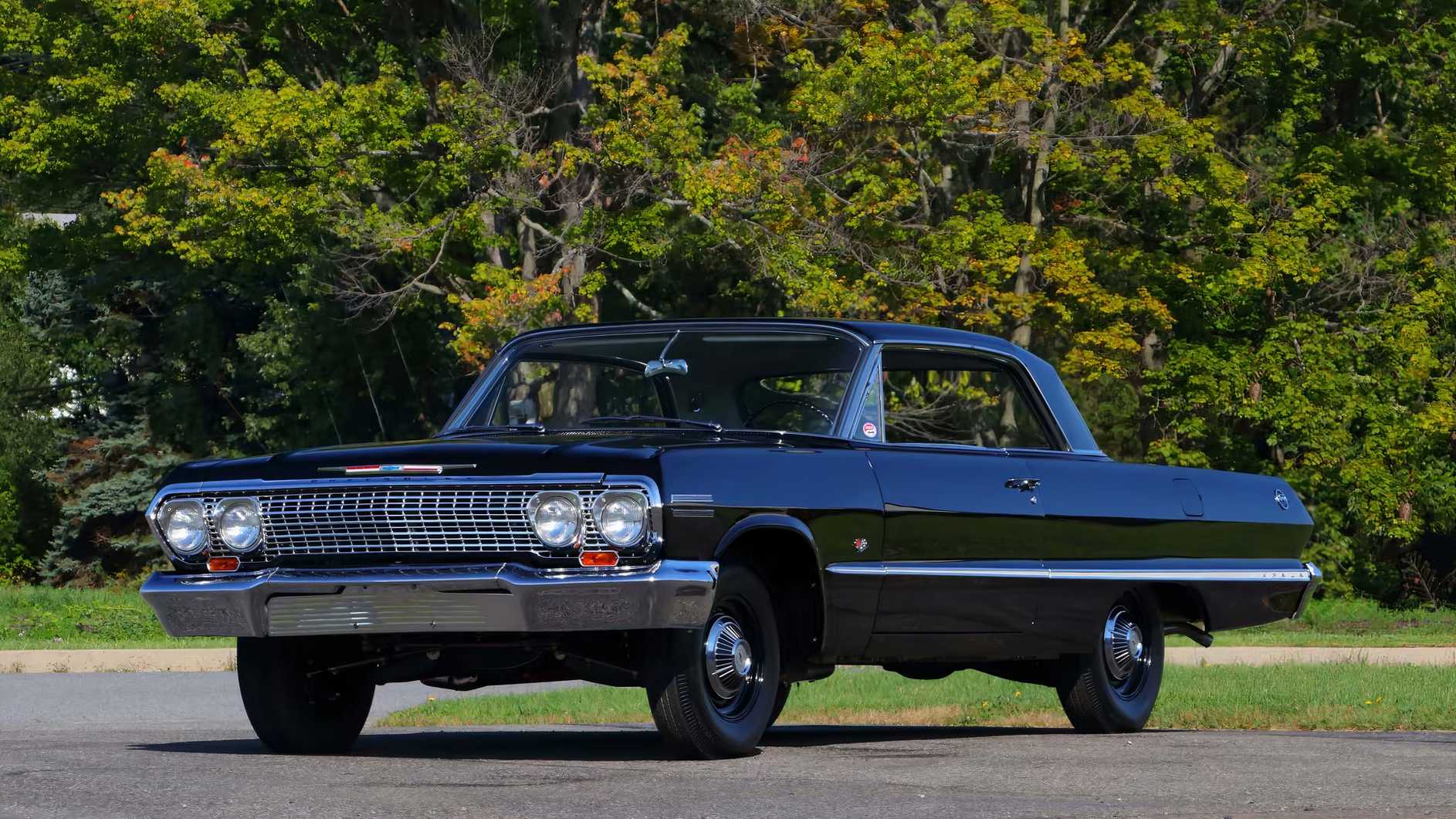
However, two rare examples were painted in a more distinctive Ivy Green, adding to their uniqueness. Despite the specialized nature of the RPO Z11, only 57 units were built, making it an extremely rare find today.
The 1963 Impala RPO Z11 is a true collector’s item, appreciated for its blend of performance and rarity. Its lightweight design, powerful engine, and limited production make it a standout example of Chevrolet’s commitment to racing excellence.
Today, these cars are highly sought after by collectors and enthusiasts, with their value reflecting their historical significance and scarcity.
Owning a 1963 Chevrolet Impala RPO Z11 is like holding a piece of automotive history. It represents a time when manufacturers like Chevrolet pushed the boundaries of performance and design to cater to the needs of drag racing fans. With its exceptional power, unique features, and rare production numbers, the RPO Z11 remains a cherished symbol of American muscle car heritage.
4) The 1968 Chevrolet Nova SS COPO: A Hidden Muscle Car Gem
The 1968 Chevrolet Nova SS COPO stands out as one of the rarest and most exciting muscle cars ever created by Chevrolet.
With just 50 units produced, this special edition Nova represents a unique chapter in automotive history, showcasing how a simple, everyday car could be transformed into a high-performance beast.
At first glance, the Chevy Nova might seem like an unassuming vehicle, perfect for daily errands or a quick trip to the store. However, the SS COPO variant was anything but ordinary.
Thanks to the COPO (Central Office Production Order) program—a clever loophole that allowed Chevrolet to build highly modified versions of their cars—the Nova was turned into a serious contender in the muscle car arena.
Under the hood, the 1968 Nova SS COPO featured the powerful L78 396 cubic-inch V8 engine. This engine was capable of producing 375 horsepower and 400 lb-ft of torque, making it more than capable of taking on many of its contemporaries.
Coupled with this formidable engine was an experimental version of the Turbo-Hydramatic 400 automatic transmission, designed to handle the immense power of the L78 engine and deliver a thrilling driving experience.
One of the defining characteristics of the Nova SS COPO was its lightweight, semi-fastback body. This design not only gave the car a distinctive look but also contributed to its performance capabilities.
The combination of a lightweight body and a powerful engine made the Nova SS COPO an impressive performer on the road.

Despite its impressive specifications, only 50 units of the Nova SS COPO were produced. Today, it is believed that just around 12 of these cars remain, making it an incredibly rare find for collectors and enthusiasts.
The rarity and unique features of the SS COPO have made it highly sought after, with well-preserved examples commanding significant prices at auctions.
A recent auction at Mecum saw a 1968 Nova SS COPO in good condition sell for $145,000. This high price reflects the car’s rarity, performance, and its status as a coveted collector’s item.
The Nova has gained popularity not only among collectors but also within the restoration and tuning communities, where enthusiasts appreciate its blend of everyday appeal and high-performance capabilities.
The 1968 Chevrolet Nova SS COPO is more than just a rare muscle car; it is a symbol to Chevrolet’s ingenuity and dedication to performance. By leveraging the COPO program, Chevrolet transformed a modest model into a powerful contender on the streets.
For those who have the opportunity to own or experience a Nova SS COPO, it represents a thrilling piece of automotive history—a reminder of a time when even the most unassuming cars could be turned into extraordinary machines.
3) The 1969 Chevrolet Camaro Berger Double COPO: The Ultimate Muscle Car Treasure
Among the pantheon of classic American muscle cars, the 1969 Chevrolet Camaro Berger Double COPO stands out as a true legend. This rare and sought-after vehicle embodies the peak of Chevrolet’s muscle car era, blending sheer power with exclusivity in a way that few cars can match.
With only around 40 units believed to have been produced, the Berger Double COPO is considered one of the rarest and most desirable Camaros ever built.
The origins of the Berger Double COPO trace back to Chevrolet’s Central Office Production Orders (COPO) program. This unique system allowed dealers to bypass the company’s standard restrictions on engine power and displacement, offering customers the chance to order highly modified vehicles that weren’t available through regular production channels.
It was through this program that Chevrolet’s most potent and exotic muscle cars came to life.
Berger Chevrolet, a well-known dealership in Grand Rapids, Michigan, took full advantage of the COPO program.
They created a special version of the 1969 Camaro that combined two powerful elements: the L72 427 cubic-inch big-block V8 engine and the Sports Car Conversion Package.

The L72 engine was a powerhouse, delivering a whopping 425 horsepower and 460 lb-ft of torque. This engine was renowned for its sheer performance, making the Berger Double COPO a formidable force on the street.
In addition to the monstrous engine, the Sports Car Conversion Package included a variety of performance upgrades. This package improved the Camaro’s handling with enhanced springs, shocks, and other components designed to give the car a more responsive and agile driving experience.
These modifications ensured that the Berger Double COPO wasn’t just fast in a straight line but also capable of impressive handling on winding roads and tracks.
Despite its performance prowess, the Berger Double COPO remained incredibly rare. The exact number of units produced is a matter of some debate, with estimates suggesting that as few as 40 to 58 cars were made.
This scarcity has only added to the car’s mystique and desirability among collectors. Over the years, many owners have held onto their Berger Double COPOs, making them even harder to find on the market.
The rarity and performance of the Berger Double COPO are reflected in its auction value. Recently, one of these coveted Camaros sold for an impressive $286,000.
This high price is a bit to the car’s exceptional status in the muscle car world. Enthusiasts and collectors are willing to pay top dollar for a chance to own a piece of automotive history that represents the peak of Chevrolet’s muscle car engineering.
The 1969 Chevrolet Camaro Berger Double COPO is more than just a rare muscle car; it is a symbol of an era when American manufacturers pushed the boundaries of performance and innovation.
For those fortunate enough to own or experience one, it represents a thrilling link to the golden age of muscle cars—a time when power, performance, and exclusivity came together in a way that continues to get car enthusiasts to this day.
2) The 1970 Chevrolet Chevelle SS 454 LS6 Convertible: A Rare Muscle Car Marvel
The 1970 Chevrolet Chevelle SS 454 LS6 Convertible is a true gem in the era of classic muscle cars. Combining raw power with open-air driving enjoyment, this car is a rare and highly coveted piece of automotive history. Its scarcity and performance capabilities make it one of the most prized examples of Chevrolet’s muscle car legacy.
Introduced as part of Chevrolet’s 1970 lineup, the Chevelle SS 454 LS6 Convertible was engineered to deliver exhilarating performance. At the heart of this muscle car is the 454 cubic-inch V8 engine, which produced a formidable 450 horsepower.
Although this figure was likely understated, it’s clear that the LS6 engine was one of the most powerful options available at the time. With 500 lb-ft of torque, this engine provided explosive acceleration and impressive straight-line speed.
The LS6 engine was paired with two transmission options: the three-speed M40 Turbo Hydra-Matic automatic or the Muncie M22 “Rock Crusher” four-speed manual.
The automatic transmission offered a smoother driving experience, while the manual provided a more engaging connection between the driver and the car’s immense power.
Both transmissions were well-suited to handle the engine’s output, ensuring that the Chevelle could perform both on the street and at the drag strip.
To complement its powerful engine, the SS 454 LS6 Convertible came with a series of performance enhancements. The car featured a more robust suspension system designed to handle the high power and torque.

Power front disc brakes were included to provide reliable stopping power, and the exterior was adorned with blacked-out grilles for a more aggressive look.
Despite its impressive specifications, the convertible variant of the SS 454 LS6 was relatively rare. Most buyers opted for the hardtop version, which was more rigid and better suited for drag racing.
As a result, only a small number of convertibles were sold, making this particular model exceptionally rare. Estimates suggest that between 12 and 25 of these drop-top Chevelles were produced, adding to its allure and rarity among collectors.
Today, the 1970 Chevrolet Chevelle SS 454 LS6 Convertible is a highly sought-after classic. Its combination of powerful performance, limited production, and open-air driving experience make it a standout in the muscle car community. One of these rare Chevelles can command a significant price at auction, with recent values reaching as high as $274,000.
This high value reflects not only the car’s rarity but also its status as a symbol of American muscle car excellence.
Owning a 1970 Chevelle SS 454 LS6 Convertible is akin to holding a piece of automotive history. It represents an era when Chevrolet was at the forefront of muscle car design, pushing the limits of performance and engineering.
For enthusiasts and collectors, this convertible remains a coveted treasure, a classic to the golden age of American muscle cars, and a reminder of the raw, untamed power that defined the era.
1) The 1969 Chevrolet Nova Yenko S/C: A Compact Muscle Car Legend
The 1969 Chevrolet Nova Yenko S/C is a rare and remarkable chapter in the history of American muscle cars. Despite its modest size, this compact coupe packed a powerful punch that earned it a special place in automotive lore. With only 38 units produced, it stands as a prime example of performance engineering and exclusivity.
The Nova Yenko S/C was conceived by Don Yenko, a former racecar driver known for his innovative modifications to Chevrolet vehicles.
Yenko’s approach to performance was straightforward: take a factory-built muscle car and enhance it to deliver even more power. For the 1969 Nova S/C, Yenko started with the 375-horsepower 396 SS model, a solid base but not quite enough for his vision.
Yenko’s solution was to swap out the 396 engine for a much more potent 427 cubic-inch big-block V8. This engine, known for its robust performance, was mated to a Muncie M21 four-speed manual transmission.
While the factory-rated output for the Yenko Nova was 450 horsepower, many believe the actual power was closer to 500 horsepower. This dramatic increase in power transformed the Nova into a muscle car that could compete with and often surpass its more famous counterparts.
The compact size of the Nova S/C belied its performance capabilities. Despite being a small car, it had the raw power to accelerate from 0 to 60 mph in just 5.5 seconds, a feat that put it in league with some of the best performance cars of its era.
This impressive acceleration was to Yenko’s skill in tuning and modifying vehicles to maximize their potential.
In addition to its engine and transmission upgrades, the Nova Yenko S/C also featured enhancements to its suspension and braking systems.
These modifications were necessary to handle the increased power and ensure that the car could perform reliably both on the street and at the drag strip. Yenko’s modifications were so effective that the Nova S/C quickly gained a reputation as a formidable performer, earning admiration from muscle car enthusiasts and collectors alike.

Today, the 1969 Chevrolet Nova Yenko S/C is highly sought after by collectors and car enthusiasts. Its rarity, combined with its exceptional performance, makes it a prized possession in the era of classic muscle cars.
The value of these rare models reflects their status as automotive legends, with recent auctions showing prices around $322,000.
The Nova Yenko S/C is more than just a collector’s item; it represents a significant moment in the evolution of muscle cars. Its creation by Don Yenko and its impressive performance capabilities make it a standout example of American automotive engineering.
For those who appreciate the history and excitement of classic muscle cars, the 1969 Chevrolet Nova Yenko S/C remains a symbol of innovation and power, embodying the spirit of an era when size and speed combined in unexpected ways.

